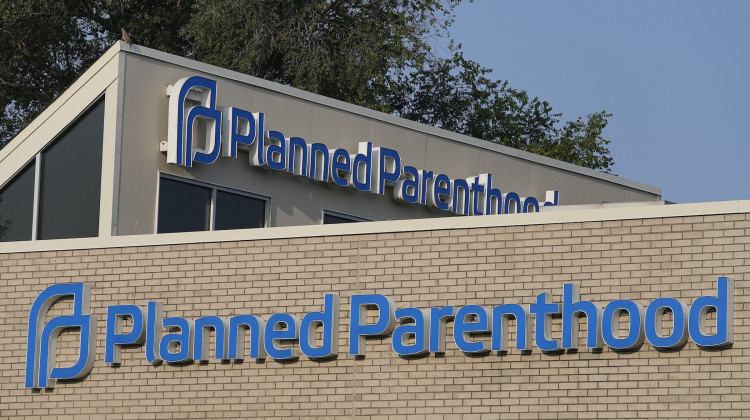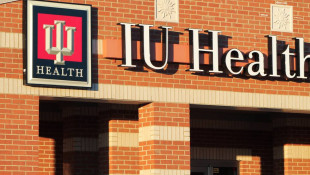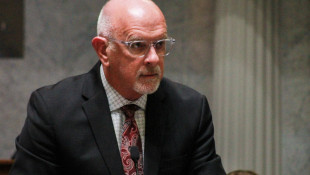In 2021, Opioid manufacturers, distributors, and retailers agreed to pay more than $54 billion to settle their role in the opioid epidemic. Indiana is set to receive $507 million in opioid settlement money over an 18-year period as part of a national lawsuit. Local subdivisions in Indiana received their first payments in December 2022.
Opioid overdose deaths have been increasing in Indiana for nearly a decade. According to the Indiana Department of Health, 1,732 Indiana residents died of an opioid overdose in 2022. Community organizations and advocates hope this money will be funneled to tackle this public health crisis. Conversations about what the money will be spent on and who has the ultimate say are top of mind.
“These funds serve as a catalyst for the expansion of current services, development of new prevention and treatment programs,” said Chase Cotten, community director of the Willow Center in Hendricks County. “Truly with this much money coming to different counties, it is a once-in-a-lifetime opportunity to make a tremendous difference countywide.”
Where is the money going?
The money is split 50-50 between state and local governments. Half of the funds are controlled by the state. A little over two-thirds of the state’s share is allocated to the State Abatement Opioid Settlement Account, which is under the control of the Office of the Secretary of the Family and Social Services Administration. This is a “restricted” share, which means it must be used for opioid addiction treatment, prevention, and harm reduction purposes.
The rest of the state’s portion is reserved for the state's benefit and can be used for non-opioid-related purposes including attorneys' fees. Indiana reported that over $2.2 million of the state’s portion went to investigation costs, litigation costs, or costs related to the operation and enforcement of the Settlement Agreement between June and December of 2022.
The state promises to follow the five guiding principles published by Johns Hopkins University’s Bloomberg School of Public Health to ensure the restricted share of the money is used in the most effective way.
The State Budget Committee has approved the FSSA’s spending plan for fiscal year 2023. The spending plan offers a broad outline of how the money will be spent, but it does not mention specific programs or define the strategies.
The state plans to allocate $10 million for workforce expansion, following recommendations from the Governor’s Public Health and the Behavioral Health Commissions.
“All of this really centers around the fact that we have a workforce shortage in the behavioral health space. We can’t continue to grow our programming without growing the workforce,” said Douglas Huntsinger, the executive director for Drug Prevention, Treatment, and Enforcement for Indiana and the chairman of the Indiana Commission to Combat Substance Use Disorder.
The state also plans to allocate $5 million to law enforcement and the criminal justice system, which includes “law enforcement equipment and training, problem-solving courts” and “services for justice-involved youth.” Harm reduction will get $1.5 million, which would be spent on “street outreach teams, mobile integrated response teams, and naloxone and harm reduction strategies.” The plan also allocates $4 million to prevention measures including school-based and after-school programs. And $3.5 million for treatment including “adolescent residential infrastructure, jail treatment, and recovery supports” and a locator tool that helps people find treatment resources.
Indiana has also established a matching program to support local units of government, service providers, and community organizations. So far, 30 local entities have been awarded the Opioid Settlement Match Grant, totaling $19 million.
“This one-time funding was used to support evidence-based prevention, treatment, recovery, harm reduction services, and expand the behavioral health workforce and implement other services and initiatives across the state,” said Kelly Welker, director of Addiction and Prevention Services with the FSSA during a public meeting of the Indiana Commission to Combat Substance Use Disorder on August 3.
The other half of the $507 million in opioid settlement money goes to county, city, and town governments. A little over two-thirds of that goes to the Local Abatement Opioid Settlement Account and must be used for treatment, prevention, and care best practices outlined in the “Approved Uses” also referred to as the “Exhibit E” list.
“Exhibit E from the settlement is a list of suggested uses and core strategies. However, Exhibit E is not legally binding,” said Sara Whaley, research associate at John Hopkins University’s Bloomberg School of Public Health.
The remainder of the portion, which is controlled by local governments, can be used for reimbursement purposes and administrative expenses of the fund.
Who decides how the money will be spent?
Thirty-eight states have set up councils, some with decision-making powers while others only play an advisory role regarding how to use the funds.
Nearby states like Ohio, Kentucky, and Kansas have established councils that have decision-making powers over between 50% and 75% of the funds.
Indiana does not have such a council.
Instead, the FSSA is required to submit a plan to the State Budget Committee for review before any part of the restricted opioid settlement funds is spent.
Local units of government decide how their portion of the settlement funds would be spent according to local procedures.
“Not having a council is not necessarily a bad thing,” said Whaley. She pointed out that using existing infrastructure in terms of the decision-making process can be beneficial.
Indiana state officials say they are working closely with the Commission to Combat Substance Use Disorder, which was established by the Indiana General Assembly in 2016, to advise on the use and reporting of the new opioid settlement funds.
The Commission met on August 3 and voted on the kinds of information that would be collected from the local units of government.
All entities receiving settlement funds must submit an annual report detailing their use of funds to the FSSA. The agency is required by the Indiana code to publish these reports online. The FSSA is also required to submit a comprehensive report to the legislature no later than October 1 of every year.
Huntsinger of the Indiana Commission to Combat Substance Use Disorder said the state recognizes the need for transparency and added that its goal is to create a public website that tracks local and state expenditures.
He did not specify when the website will be available.
What could go wrong?
Community leaders highlight the fact that these funds are crucial in the fight against the opioid epidemic.
“We're not going to use [the money] to fill budget gaps or pave roads or whatever, you know, the most urgent need is trying to stop folks from dying and to restore families,” said Cotten of the Willow Center in Hendricks County.
Experts also stress the importance of coalition building during the distribution process.
“I think [states] need to prioritize strategic planning and coalition building,” said Ju Nyeong Park, an epidemiologist at Brown University.“So I think that having academic researchers…[and] experts in the room is very, very important.”
These coalitions should also include the voices of community members, people who use drugs, and their families, said Park, who is also the founder and director of the Harm Reduction Innovation Lab.
“It is a long-term endeavor, it’s going to take several years, if not decades, to dig ourselves out of this mess,” she said.
Long-term projects could falter.
In the late 1990s, the majority of U.S. states reached a historic settlement with the tobacco industry to recover the health care costs associated with smoking-related illnesses. However, some states misused or redirected the funds for other purposes unrelated to public health.
Overall, less than 3% of revenue from the settlement and tobacco taxes went to tobacco control efforts nationwide.
The American Lung Association gave Indiana a failing grade for how it is handling the tobacco crisis in its 2023 State of Tobacco Control Report.
The state spent $7.5 million on Tobacco prevention in 2022, which is 10.2% of the Centers for Disease Control and Prevention’s recommended spending.
“From what I hear about how the tobacco dollars were utilized, there is a real desire to see a lot more transparency,” said Douglas Huntsinger of the Indiana Commission to Combat Substance Use Disorder.
Side Effects Public Media is a health reporting collaboration based at WFYI in Indianapolis. We partner with NPR stations across the Midwest and surrounding areas — including KBIA in Missouri, Iowa Public Radio, and WFPL in Kentucky.
Contact Side Effects Public Media’s health reporter Alex Li at ali@wfyi.org.
 DONATE
DONATE






 View More Articles
View More Articles



 Support WFYI. We can't do it without you.
Support WFYI. We can't do it without you.